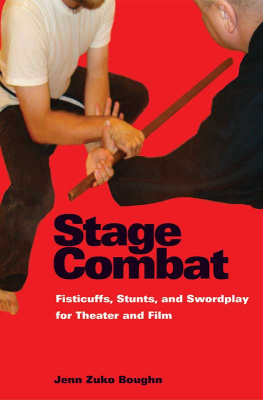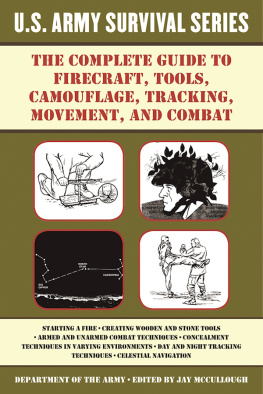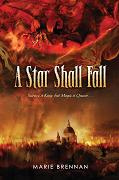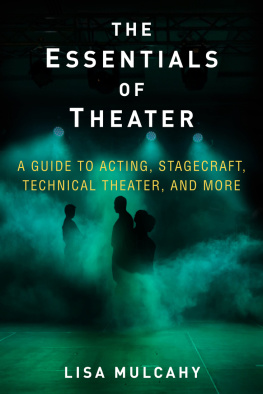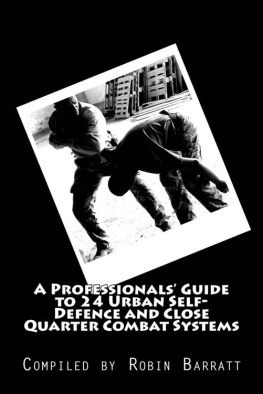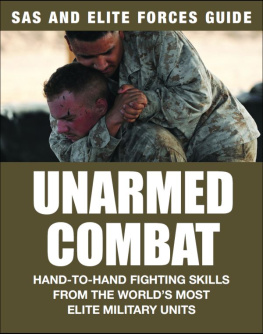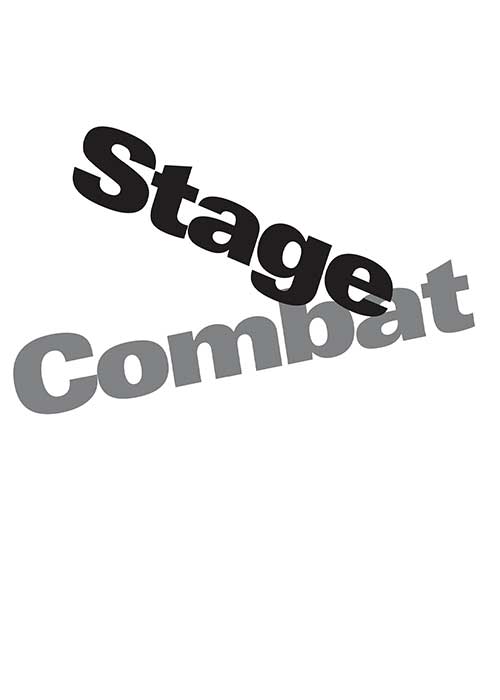

2006 Jenn Zuko Boughn
All rights reserved. Copyright under Berne Copyright Convention,
Universal Copyright Convention, and Pan-American Copyright
Convention. No part of this book may be reproduced, stored in
a retrieval system, or transmitted in any form, or by any means,
electronic, mechanical, photocopying, recording, or otherwise,
without prior permission of the publisher.
10 09 08 07 06 5 4 3 2 1
Published by Allworth Press
An imprint of Allworth Communications, Inc.
10 East 23rd Street, New York, NY 10010
Cover design by Derek Bacchus
Interior design by Dianna Little
Page composition/typography by Susan Ramundo
Cover photo by Ginger Zukowski
ISBN-13: 978-1-58115-461-0
ISBN-10: 1-58115-461-5
ISBN 9781581158250
Library of Congress Cataloging-in-Publication Data
Boughn, Jenn Zuko.
Stage combat: fisticuffs, stunts, and swordplay for theater and film/Jenn Zuko Boughn.
p. cm.
Includes bibliographical references and index.
1. Stage fighting. I. Title.
PN2071.F5B68 2006
792.028dc22
2006026840
Printed in Canada
Dedication
For Mom, my first movement instructor, and Jason,
my current movement instructor, with love
Contents
Acknowledgments
I m honored and proud to have been involved with so many extraordinary, talented people, who all added to making this project fun and successful.
Thanks to Timothy Tait, Dale Girard, and Geoff Kent for introducing me to, training me for, and continuing to play with me in the SAFD stage combat world. Also to the theatre companies of the University of Colorado, Boulder; Frequent Flyers Productions; and Five Funny Faces for support, training, and theatrical brilliance over the years.
To the Genki Kai and the Boulder Quest Center, two dynamite martial arts groups. Your high quality training is appreciated. To Jason Boughn, for throwing a dagger into my throat and then my heart. Im proud to be his wife and uchi-deshi.
To Ginger and Jesse Zukowski for being superhuman amateur photographers, and thanks also to Cynthia Berry for her aerial dance pictures from back in the day! Huge thanks to Jesse and Jason for being enthusiastic, hardworking models. And thanks to Nicole, Derek, and everyone at Allworth Press for putting it all together and making it pretty!
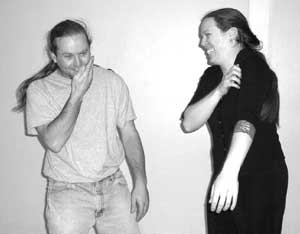
Finally, Id like to thank the Metropolitan State College of Denvers theatre program for putting up the class every year, and especially the inaugural fall 2005 semester Fundamentals of Stage Combat class. You guys were fabulous students and models as well. I look forward to Metros stage combat class every yearthanks for making it such a pleasure the first time around.
Caution!
D o not mess about or play carelessly with any of the techniques, drills, or exercises you see in this book.
Though the manual is set up for easy reference and explanation for the beginner, you should never undertake any physical activity (particularly illusions of violence) without prior consultation of a doctor. This manual is meant as a guide and an addition to, not a substitute for, professional instruction. Use the techniques, drills, and exercises with caution, care, and professional guidance or supervision. Those involved with the writing, research, and production of this book are not responsible for any injury while practicing anything found within.
The photographs herein represent both experts and beginners in the field of stage combat: the mix of depicted skill levels is meant for inspiration both to the experienced practitioner and to the beginning student who may think shes too klutzy for stage combat.
Chapter One
Violence and
Actor Safety
W eve all no doubt heard it said that artists suffer for their art. Artists in general have a certain masochistic reputation among layfolk: How many times have we researched a poets or an actors biography, only to discover years of substance abuse and emotional problems? And there are countless stories of actors involved in messy divorces or doing a rehab stint. So actors themselves have this idea that they are giant puppets made to show suffering onstage for entertainmentif they themselves suffer for the performance, so much the better for authenticity.
The Show Doesnt Have to Go On
There was a memorable story posted on the bulletin board in the University of Denver theatre department that ran approximately like this:sharp, unretractable blade into the guard panel, thereby allowing for a realistic stabbing without hurting the actor being stabbed. Of course, theatre being the unpredictable art that it is, one night the panel had shifted, and the actor playing Dracula was stabbed in the chest. He recovered in the hospital from a punctured lung, and proceeded to sue the university soon thereafter.
Whats the point of bringing up this anecdote? Simple: There is no reason for an actor to be in that kind of danger onstage. There is no justification for real violence onstage. Hiring a trained fight coordinator may seem like an unnecessary expense, especially in a small theatre with a minuscule budget, but without stage combat choreography, serious problems can occur. Even a simple pratfall or slap in the face can cause real damage to an actor if not done properly. And if done properly, it loses none of its realism for an audience. Any actor who tells you hed rather actually be slapped in a scene instead of learn a stage slap because of authenticity should learn the following unlucky thirteen:
Catching the eyeball with a fingernail can cause permanent blindness or a dislocated lens, not to mention serious pain in the moment.
A stray fingernail can rip the eyelid, lip, or other tender parts on the face.
Covering the ear with a slapping hand can cause a miniature vacuum in the ear canal, which can rupture the eardrum, causing permanent deafness.
Slapping the ear with an open hand can cause cauliflower ear, a common disfigurement seen in boxers.
It takes a modest clap to dislocate the jaw.
It takes a strong clap to break the collarbone.
If earrings are worn, there are potential rip or puncture hazards. If rings are worn, the face or anything on it can be torn.
Not to mention a basic lost contact lens or glasses gone to the floor or askew, which is disconcerting in the middle of a scene.
Or a bloody nose, which stops the action, scares an audience, and ruins costumes.
Just a little adrenaline (which we all have when onstage) can cause the victim to bite her tongue or lip.
Just a little more adrenaline than the above example can knock out a tooth.
Ever have a broken nose? The pain and shiners will put you out of work for a while. If part of your noses bone is driven into the brain, you could suffer internal facial bleeding (yuck), or even, in extreme cases, brain damage or death.
The temple is a tender spot, and you can suffer brain damage or death if it is struck with force.
Obviously, this list of serious slap-related injuries doesnt even include the simple bruising or scratching that can occur when one has to do a slap every night of every weekend for several weeks.
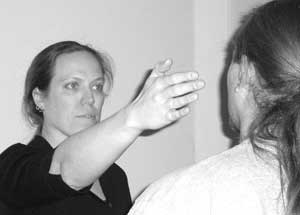
Next page
